Posted by
Mordy Oberstein
What a year in the world of SEO. Sure, I say that every year, but 2018 certainly had its share of game-changing developments. Predisposed to a high volume of SEO themes, be it mobile-first or Google’s new “journey” outlook on search, 2018 has a flavor all unto itself.
Now then, there are just way too many stories for me to cover in one post to catch everything that we saw hit the floor in SEO during 2018. What’s to come is my best crack at grabbing all of the major stories, the biggest changes, and the most interesting advancements that came out of the world of search in 2018.
Here we go!

Deep Impact! 2018’s Google Algorithm Updates
This could be a post all unto itself. Aside for the algorithm updates Google confirms, year in and year out there are a heap of “unconfirmed algorithmic events.” These algorithmic mysteries of the ***** run the full range of rank fluctuation impact, with some unconfirmed Google updates being on the more minimal side while others are major league rank events! What’s to follow is a run-through of the official Google algorithm updates. (You can see the full listing of the updates Google made in 2018 on our Google algorithm update timeline.)
Full Speed Ahead – Mobile Page Loading Speed becomes a Ranking Factor with the Speed Update

2018 began with a bang. A confusing bang actually. In January, just as 2018 rolled in, Google hit the SEO industry with the news that mobile page speed would finally become a ranking factor. Until that time, speed was only an official ranking signal on
As with these sort of “things”, there was a plethora of speculation and a tad of dread as the Speed Update slowly inched towards its July release. Would the update hit sites hard? What did Google consider to be fast? Between January and July Google released a few statements of clarification in order to ease our collective minds. One of the more notable pieces of information to come out of these statements was that the Speed Update was meant to deal with the seriously slow sites of the mobile web. Also, and unlike its desktop counterpart, the mobile Speed Update works on a sliding scale, it is not zero-sum. Meaning, it’s less about hitting a certain threshold and more about improving your site and making it faster with Google accounting for each step you make towards a truly fast loading mobile page.
Mobile-First Indexing Arrives in 2018

It was the year of mobile over at Google (though, and ironically so, 2018 saw Google all but
On March 21st, we began seeing some major structural changes to the SERP that pointed to the roll-out of the mobile-first index. Sure enough, about a week later Google officially announced that they had begun to release the mobile-first index. Over the course of the year, we saw what were “waves” of mobile indexation as Google seemed to move sites over to the new index in batches.
The roll-out was not without minor bumps in the road, such as sites that moved over to the mobile-first index having a broken Google cache page. When trying to access the cache version via the Google SERP, users were directed to a broken Google cache page. This was ultimately fixed as all in all the transition to the mobile-first index has been pretty smooth as indexation continues to take place.
Broad Core Algorithm Updates

2018 was the year of the “Broad Core Algorithm Update.” During the course of the year, we
Aside for these updates being quite impactful, the three such updates seen in 2018 are unique for another reason, Google’s vocalness. Unlike most other updates, Google quickly confirmed the three broad core algorithm updates seen in 2018. In fact, for all three such updates, Google offered a peculiar piece of advice if your site was impacted by the changes.
Through its search liaison, Danny Sullivan, Google said, “As with any update, some sites may note drops and gains. There’s nothing wrong with these pages
The first of the core updates took place in early March in what was a 14-day algorithmic event. During that time our Rank Risk Index recorded rank fluctuation levels of 99/100! About a month later we recorded yet another substantial Google update. On April 13th, just a month after the March core update finished, the Rank Risk Index captured a 10-day Google update. This too was confirmed by Google as being a “core algorithm update.”
Fast forward to August, and there was yet another core update, but this one deserves its own section!
The August Google Core Algorithm Update aka The Medic Update

On August 1st our Rank Risk Index yet again caught a sharp increase in rank movement with fluctuation levels hitting 94/100 by August the 2nd. Though lasting just four days, this too was announced to be a core algorithm update, one of the most impactful we’ve tracked in quite some time.
When we started to investigate the impact of the August core algorithm update we noticed two surprising items:
- Even the first and second ranking positions were impacted (usually these positions are not subject to such heavy volatility during an update)
- Niches related to YMYL (Your Money Your Life) sites, such as the health and finance niches, were impacted to a greater extent than others
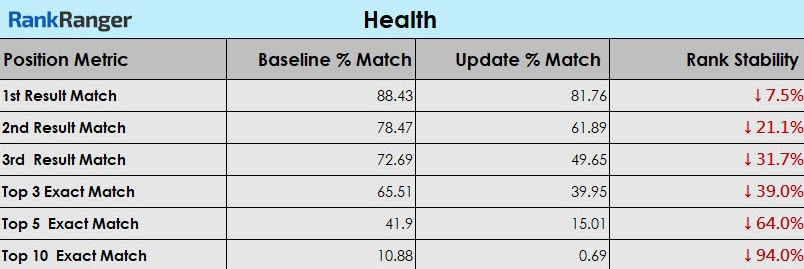
Fluctuation data for the health niche during the Medic Update
As a result of the latter finding, and as such reports came filtering in from around the industry, the August core algorithm update became known as the Medic Update. This was really the start of the more recent controversy surrounding Google’s ability to perform some of the new tasks within its Search Quality Rater Guidelines algorithmically. While we cannot conclusively say Google can do as such, we did notice that there was a general parallel between the update and some of the new guidelines in that Google seems to now be able to profile a site according to its purpose, according to a site’s intent profile.
Paid Search Updates in 2018

It was an interesting year in paid search. Other than the slew of changes, new features, and updates that take place during any given year, 2018 saw Google reorganize itself and its AdWords umbrella. In fact, the term AdWords became entirely obsolete. Here’s what happened.
Ad Changes Out of the Gate in 2018
Google started the paid search year off without wasting a moment. On January 10th Google said that Review extensions for what was then known as AdWords (more on that below) would be no more.
Also coming to us in the first month of 2018, Google gave users
Google Renames AdWords to Google Ads
At the end of July 2018, AdWords became no more. Instead, Google rebranded its SERP ads announcing that henceforth they will be known as Google Ads – not AdWords. At the time, this basically meant Google gave its SERP ads a new name with a new logo. Though, Google stated at the time that the switch was meant to offer a more intuitively fitting name. Soon after, however, Google did make a change of substance. As of July 11, 2018, Google’s hotel ads were placed under the Google Ads umbrella.
Google’s Responsive Search Ads
The spring of 2018 saw then AdWords release an all-new ad format to
A few months later, in August, Google announced new ways to measure a responsive ad’s performance. Within these new metrics was an “Ad Strength Indicator” meant to give insight on an ad’s relevance and the like.
Most recently, in early December 2018, and as the ad format continued its roll-out, Google made a series of improvements to responsive search ads. Part of the changes included being offered actual headline suggestions and the proliferation of the format to 10 additional languages.
At the same time, Google did not leave traditional text ads to fall by the wayside. As responsive search ads were in the midst of their roll-out, Google decided to give text ads some of the same advantages of the new format. Specifically, the search engine gave text ads an additional headline and longer descriptions.
Shopping Ads Come to Image Search as Video Comes to Showcase Ads
Just in time for the holiday season, Google gave advertisers two new shopping ad formats in mid-September. First, the search engine gave us
Image search also got an ad boost. Along with videos within Showcase Shopping Ads, Google also announced a carousel of ads that appear within image search. This comes as Google noted that shoppers tend to utilize image search as part of their buying journey.
Exact Match Update Attempts to Align to Query Intent
Google’s exact match continues to evolve with the scope of what is meant by ‘exact match’ expanding each step of the way. In the fall of 2018, Google took ‘exact match’ to a new level altogether, query intent. With the change, Google determined that close match variants now include implications. Meaning, if within a query is an implied meaning that accurately reflects the query’s intent, it will be considered a close match variant.
A Few More Notable Changes to Google Ads in 2018
Before we move on to the next topic, Bing Ads, here are a few more changes Google made to paid search in 2018. While these may not have been as notable as some of the earlier items discussed here, I thought they were still worthy of being mentioned.
Google Ad Deactivation
In March, Google announced that AdWords, as they were then called, would be closing any account that lacked ad spend over the course of a 15 month period. Note, it is possible to reactivate a closed account.
Goodbye to Bail Bond Service Ads
Google has a history of banning certain ad types it deems to be either spam-like or harmful, etc. This year’s victim was Bail Bond Service Ads. The July ban was said to be due to the ads type targeting people who were already “most vulnerable.”
Changes to Bing Ads in 2018

Over the past few years, Bing has made great strides in its paid search program. 2018 saw this trend continue as Bing made multiple significant changes during the year.
Bing Hotel Ads
In an attempt to keep up with the many changes Google made to hotel listings/advertising in 2018 (to be discussed later in this post), Bing began the year by introducing ads to its version of hotel Knowledge Panels.
The Launch of Audience Segmentation
Also a January release, Bing gave its advertisers an easy way to compare the performance of their targeted ads to those ads not targeted towards a specific demographic.
Bing Finally Removes Sidebar Ads
Bing often follows Google’s footsteps, though it is often a few years behind said footsteps. Such was the case with sidebar ads. Removed by Google in 2016, Bing began to do the same in March of 2018. As Bing has removed sidebar ads, it has added extra ad space at the bottom of its SERP.
Bing Introduces In-Market Audiences to the World
In May 2018, Bing pulled its In-Market Audience program out of “beta” and let it loose on the world-at-large. The In-Market Audiences are those users that Bing has determined to be in the hunt for a specific product or service. This, of course, makes such users prime candidates for ads related to a given product/service.
Bing Releases Cross-Campaign Tracking
The fall of 2018 saw Bing introduce a new way to track your performance and your goals across multiple ad campaigns. That is, when your campaigns have shared targets, you can now use the Bing ad platform to engage an AI tool in order to analyze such targets across your entire Bing advertising action.
Bing Ads Goes with an Extra Line for Headlines and Descriptions
In order to allow users to keep their Google Ads synced with Bing Ads, November saw Bing give text ads an extra line for both headlines and descriptions. This came as Google did the same for its text ads. By matching Google’s length limits, Bing gave Google Ad users the ability to import their ads that contained the extra headline and description text.
Where We Stand with the Google SERP in 2018

It goes without saying that the Google SERP is in a near constant state of change. There are literally hundreds of changes to the SERP and its features each and every year. Obviously, covering all of them is impossible. It would also be a bit of
A New UI for the Google SERP
While not the biggest story of the year, starting with Google’s new look for the SERP is the most logical place to start. After months and months of testing a bit here and a bit there, Google presented us with a new look for the search results page. The updated UI contains a sticky search bar that follows you as you move down the SERP as well as a more rounded design for all of the “boxes” that appear on the results page.
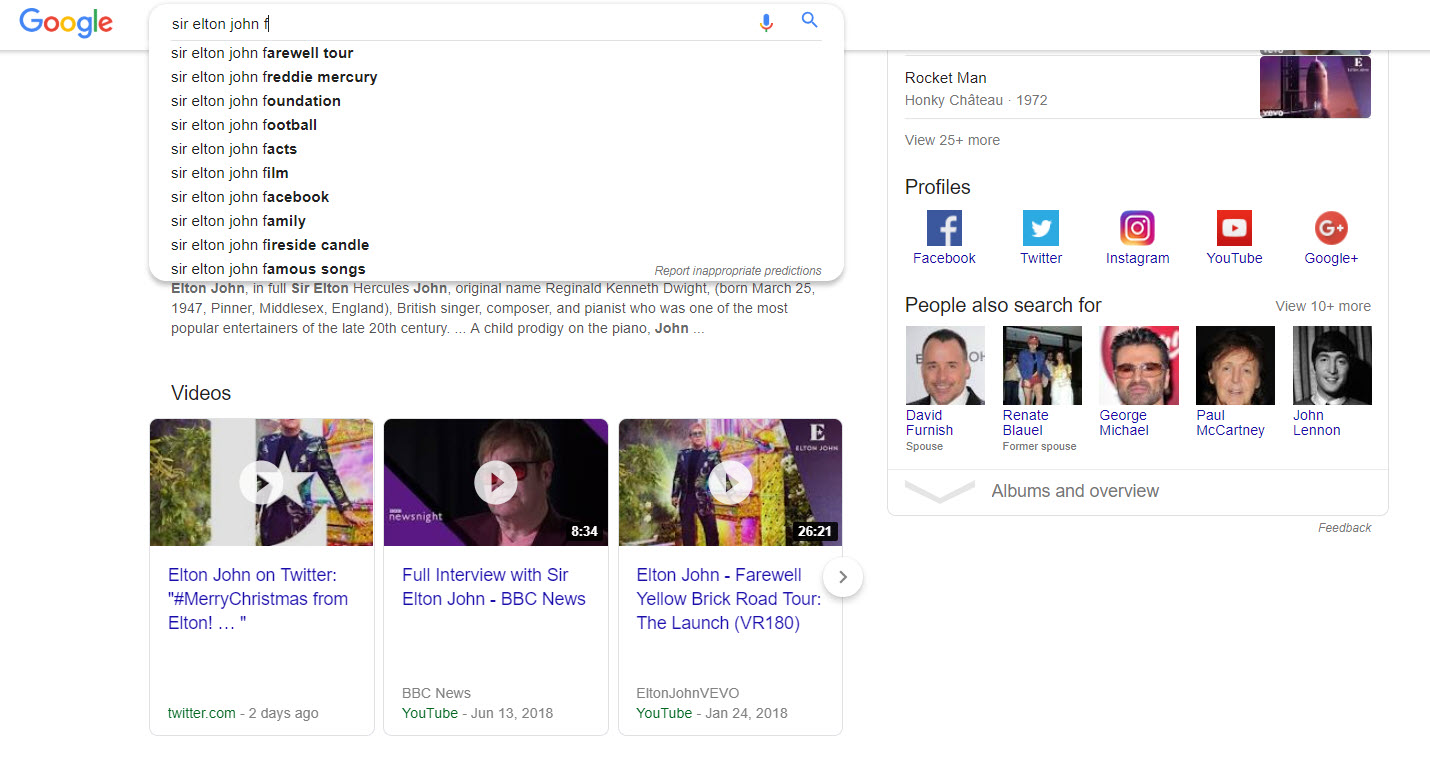
Google’s new SERP design included a sticky search box and a more rounded look for multiple page elements
Zero Organic Result SERPs
If you ever wondered what would happen if Google got rid of all the organic results on the page and in their place showed just a Direct Answer box, you need
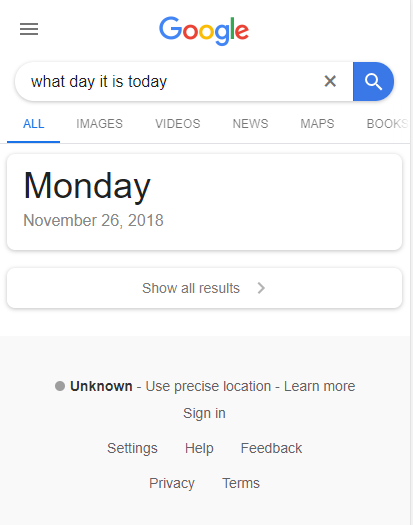
A SERP showing an Answer Box without any organic results
The test was eventually pulled back as Google said that they had collected all the data they needed. That was until November where for similar queries Google said that 0-result SERPs would be a permanent fixture on the mobile SERP (in limited instances).
Multiple & Drastic Changes to Hotel Listings on the SERP
One of the biggest and more constant stories on the SERP in 2018 were the various changes Google made to hotel listings, changes that significantly altered how Google presents hotels on the SERP.
It all started in the first month of the year as Google tested a new UI for the local finder when showing hotel results on mobile. Many of these new features would become fixtures of the Local Finder for hotel results. As part of this new design, we got bigger images for hotel listings, larger price labeling as well as transportation insights. When Google officially went with these new elements they also integrated hotel listings with Google Flights making the two elements a pure travel powerhouse.
Hotel Local Panels, in particular, became far more formidable (as if they weren’t already) with the insertion of Price Insights. Among many other features, the Price Insights Google started offering tells users if the hotel they are viewing is showing competitive pricing relative to other hotels. In this sense, Google moved away from seeing a Local Knowledge Panel as being all but sacred brand space.
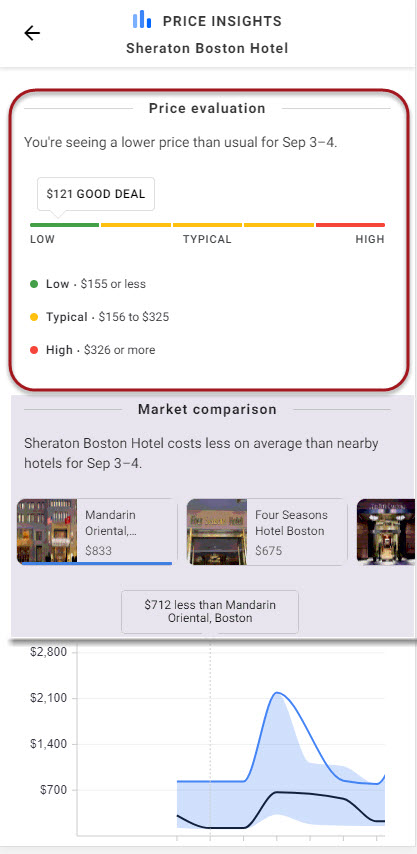
Hotel price insights showing within the mobile Local Panel
Just a short time later, Google overhauled the interface users saw when accessing hotel Local Panels on
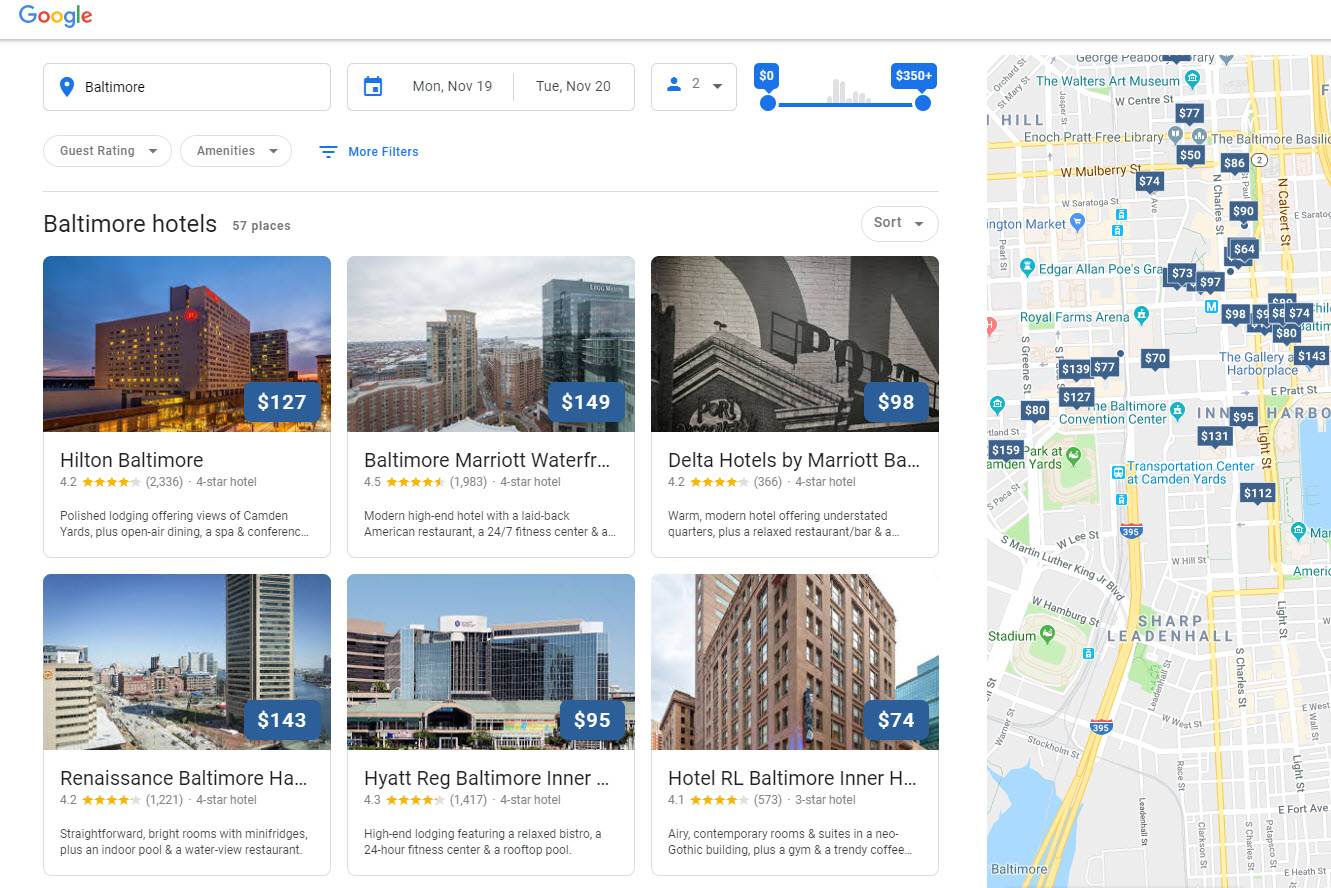
The new format for desktop hotel listings within the Local Finder
Lastly, hotel Local Packs got a nice new set of visually striking formatting. Now hotel Local Packs contain larger images, a more comprehensive map, as well as a ‘highlights carousel’.
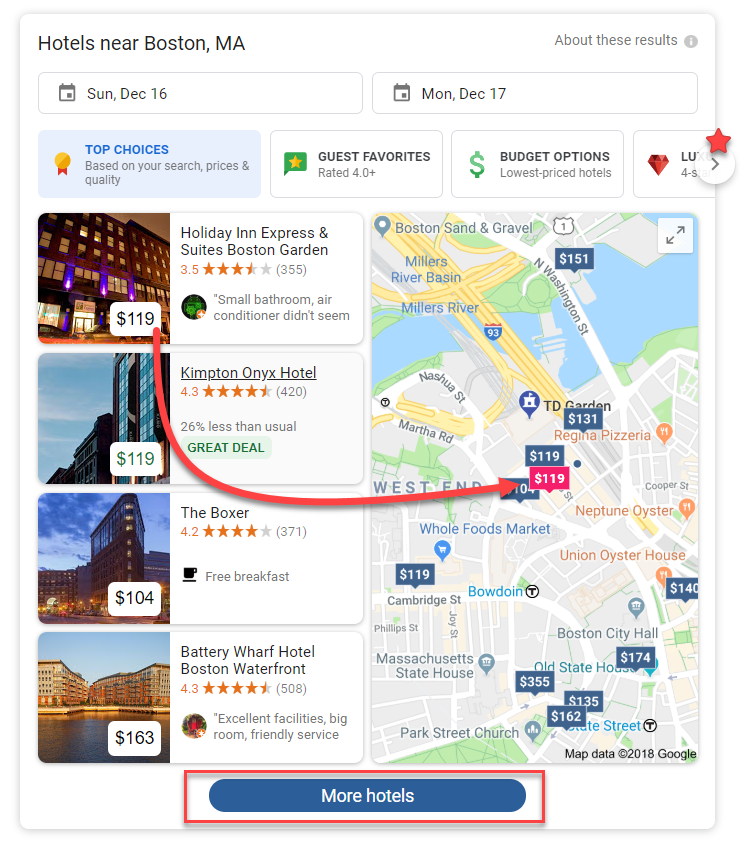
Hotel listings now appear in a more visually oriented Local Pack
Google’s 20th-Anniversary Updates
Towards the end of September, Google celebrated its 20th birthday by unveiling some seriously innovative additions to the SERP. The updates include the insertion of Google Feed (renamed Discover) onto the mobile SERP, a mobile Knowledge Panel that contains tabs unique to the entity and aimed at targeting multiple user intents, and so forth.
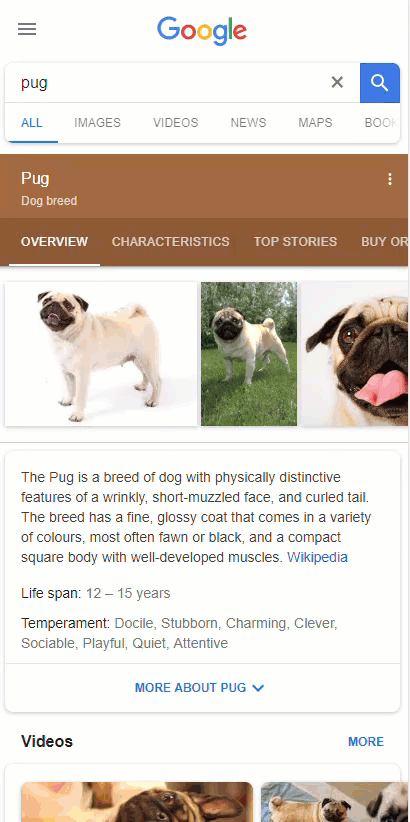
Knowledge Panels can now contain query specific tabs aimed at highly targeting intent
Beyond the practical additions to the SERP, Google has all but revamped its self-perception and search philosophy. That is, with the 20th-anniversary changes, Google is moving away from being a content provider (ala its SERP features) and moving towards becoming a search “guide.” With what it refers to as search being a “journey,” Google has taken up ensuring that users not only have relevant results for the current query but have a path towards fulfilling the ultimate aim of their search.
Google Kills Pagination on Mobile
In April of 2018, Google killed pagination on mobile. Though not electing to go with infinite scrolling, Google did insert a “more results” button that in many ways did away with “page two demarcation.” (See analysis on the impact of Google’s mobile ‘more results’ button.)
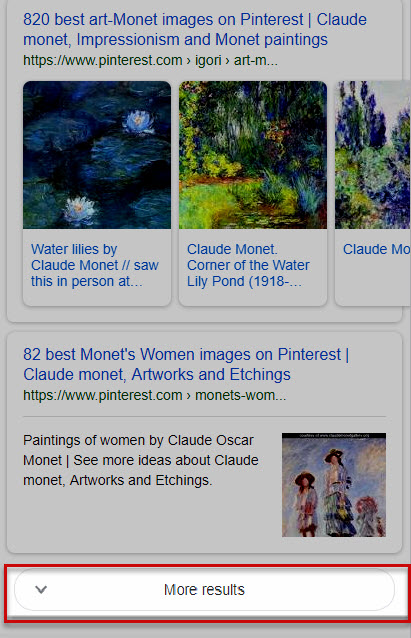
The ‘More results’ button replaced pagination on the mobile SERP in 2018
Say Hello to AMP Stories
In one of the most visual SERP events of the year, Google gave us the gift of AMP Stories on mobile. Taking a page out of Instagram’s book, AMP Stories are visually focused content productions that appear as part of a site’s mobile organic result.
Since its initial and limited release, the format has become available to all publishers. More, AMP Stories became monetized on November 14th. Still, the format has not been widely adopted, at least up to this point.
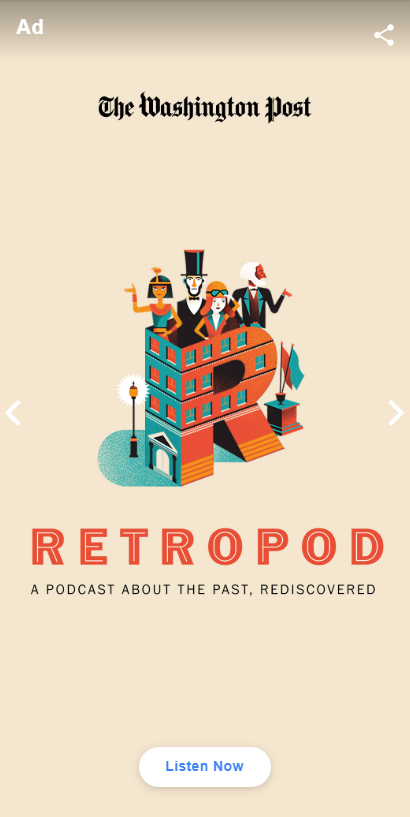
An ad appearing within an AMP Story
Featured Snippets in 2018
Featured Snippets showed no sign of slowing down or of being less relevant in 2018. Perhaps the most notable “Featured Snippet item” was the advent of the multifaceted snippet which hit mobile SERPs in March. These Featured Snippet behemoths are essentially two snippets one placed on top of the other. The upshot is that the second snippet presented helps supplement or even extend the content found in the first offering. While not extremely common to see on the SERP, Google did start testing showing multifaceted Featured Snippets on desktop in early November.
There were also a series of format changes and overall upgrades given to Featured Snippets in 2018. Some of the most notable examples include:
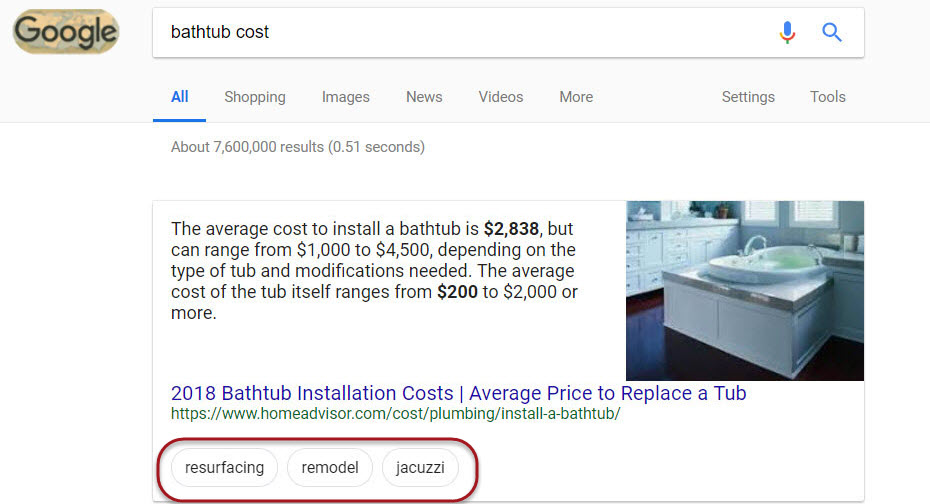
Intent refining bubble filters within a Featured Snippet
A Year for Google Posts
2018 was the year for Google Posts! Well perhaps, as a move that put the feature lower down in the Knowledge Panel has raised some serious traffic concerns. Still, it was a big year for the custom content element called Google Posts. As with Featured Snippets, there were a large number of tests and changes to Google Posts in 2018. Some of the more memorable ones included
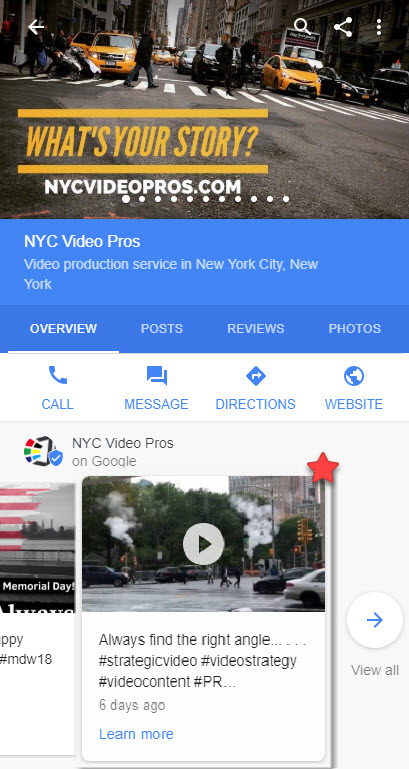
A Google Post displaying video content
However, by far my favorite addition to Google Posts in 2018, was the introduction of Google Post Stories. Like Instagram Stories and even AMP Stories, this fine feature offers a highly visual presentation that is found within the Google Posts section of the Knowledge Panel.
Google Gives us the Explore Panel
The most substantial new feature of the year has to be the Explore Panel. Appearing to the right of the organic results, where a Knowledge Panel is found on desktop, this feature contains a page one ranking URL much like a Featured Snippet does. Based on how we’ve seen Google label the feature in the HTML we are calling it the Explore Panel. This “mutt” of a SERP feature appears on roughly 2.5% of desktop SERPs (US) and seems to display when the query is related to but one facet of an entity.
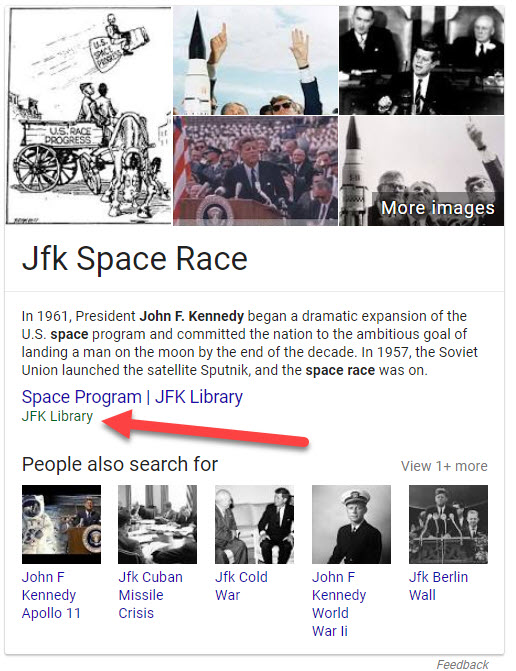
An Explore Panel for the query ‘JFK space race’ shows similarities to both the Knowledge Panel and Featured Snippet
Local SERP Feature Changes
Always a favorite for tests and changes, Google’s local SERP features are in a near-constant state of flux. There are literally dozens upon dozens of tests made each year along with a nice amount of permanent upgrades. This year saw the following local SERP feature enhancements (other than the ones already discussed here as part of another topic):
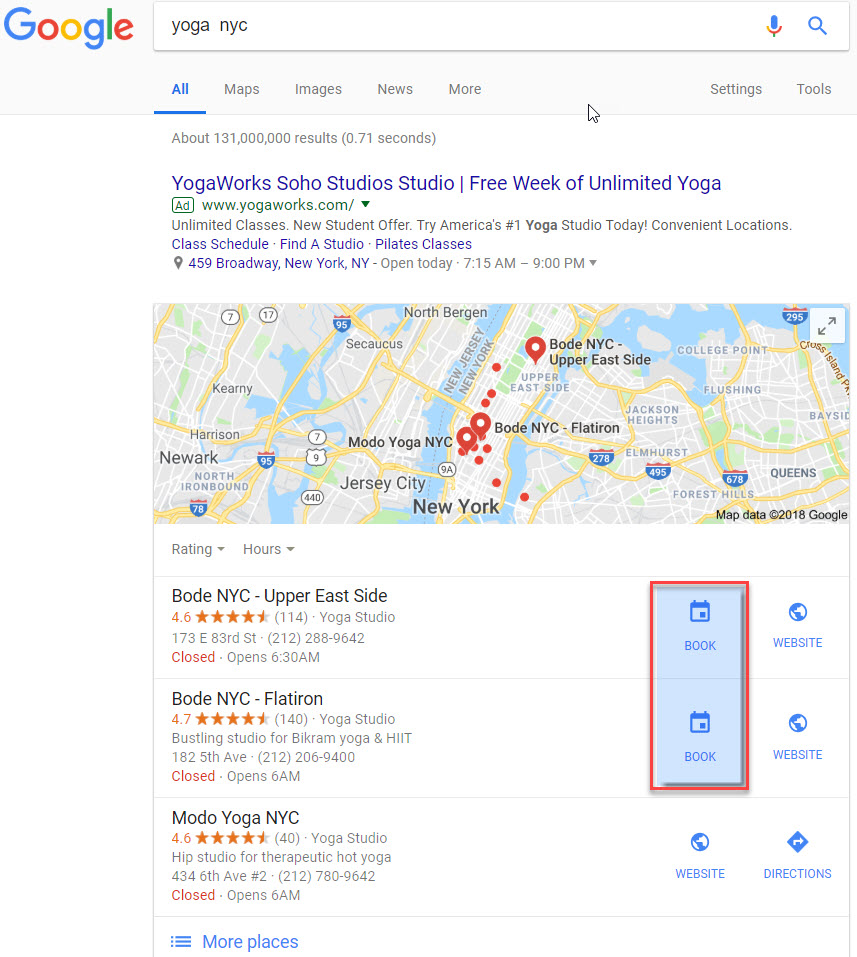
Reserve with Google enters the Local Pack
A Roundup of the Rest of 2018’s Notable Changes to the SERP
Just in case all of the new SERP items we’ve already discussed were not enough, here’s a tour of even more Google SERP additions that we saw in 2018. Though they may not necessarily represent a theme or fall into a larger category, these SERP changes deserve to be heard!
People Also Search For Sub-Categories
On January 22nd, reports of People Also Search For carousels with a series of sub-carousels came in. When expanded, another series of carousel cards appear for your scrolling pleasure.
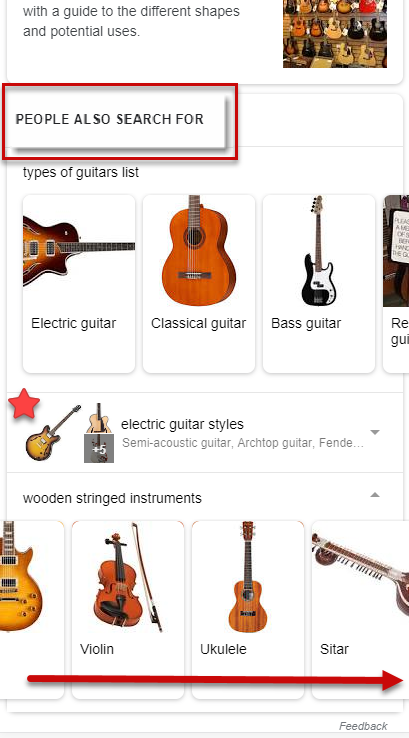
Multiple sub-carousels within the ‘People Also Search For’ feature
A Deeper Events Experience on the SERP
Just in time for summer, Google released a nice upgrade to “events” within the mobile search results. With the changes, you can now save events, buy tickets from multiple providers, and so forth.
SiteLink Image Thumbnails
Making SiteLinks more visible, Google gave select incarnations of the
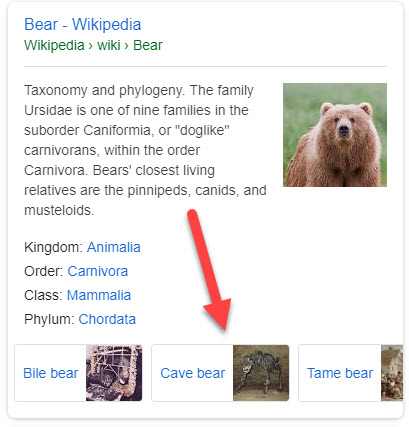
A mobile SiteLinks carousel showing with image thumbnails
More Related Search Boxes on the SERP & Expandable Related Search Listings
In 2018, we saw Google add multiple Related Search boxes to the SERP. Each box seems to be present for the sake of targeting a unique take on user intent. More, and towards the end of the year, Google released expandable Related Search results on mobile. In this case, what we have is essentially the ability to expand a Related Search result
Google Replaces Desktop Video Thumbnails with a Carousel
In June, our SERP Feature Tracker saw a huge 92% decrease in Video Thumbnails on
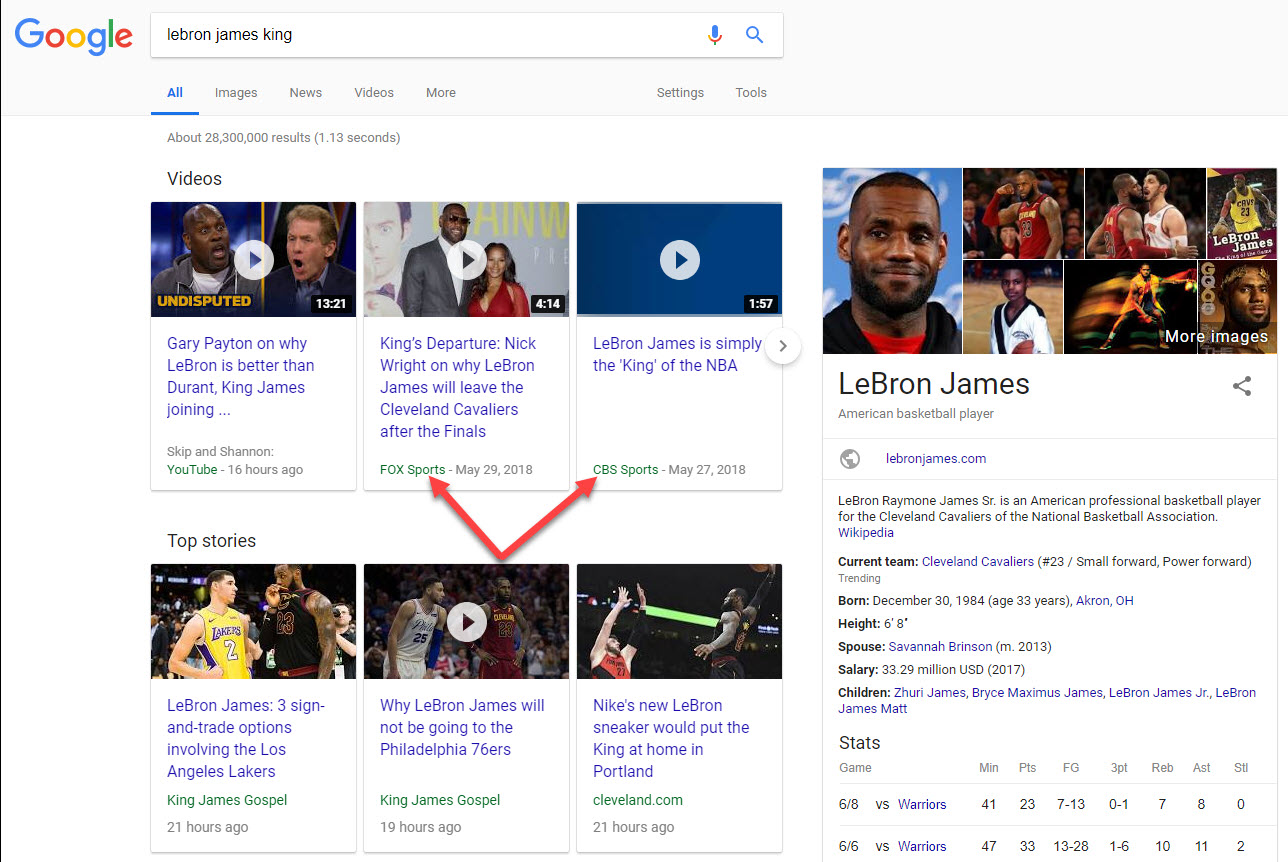
Google’s desktop video carousel showing two non-YouTube URLs
Changes to Google’s ‘Program’ in 2018
I just wanted to end with a quick look at some of the broader changes Google made in 2018. These are some of the new items that had less to do with Google updates, or advertising, or even the SERP per se.

A New Search Console for 2018
At the very start of 2018, Google gave all Search Console users access to the beta version of the platform. By September, the new version of Search Console was out of beta and a new set of insights and options were added. By the time December came around, Google was telling users that old reports within the previous version of Search Console would no longer be accessible.
Google Partners with WordPress
With WordPress dominating the market as a full third of all sites are supported by it, Google decided to send the company a team of its own engineers. The goal was to help foster a faster web as WordPress has a reputation of being on the slower side. For Google, the partnership represented the chance to make AMP more popular. The result of these efforts produced a new AMP plugin for WordPress in December 2018.
A New Data Search Engine
Fall 2018 gave us a brand new search engine. Called Dataset Search, Google created a search engine dedicated solely to helping users find datasets.
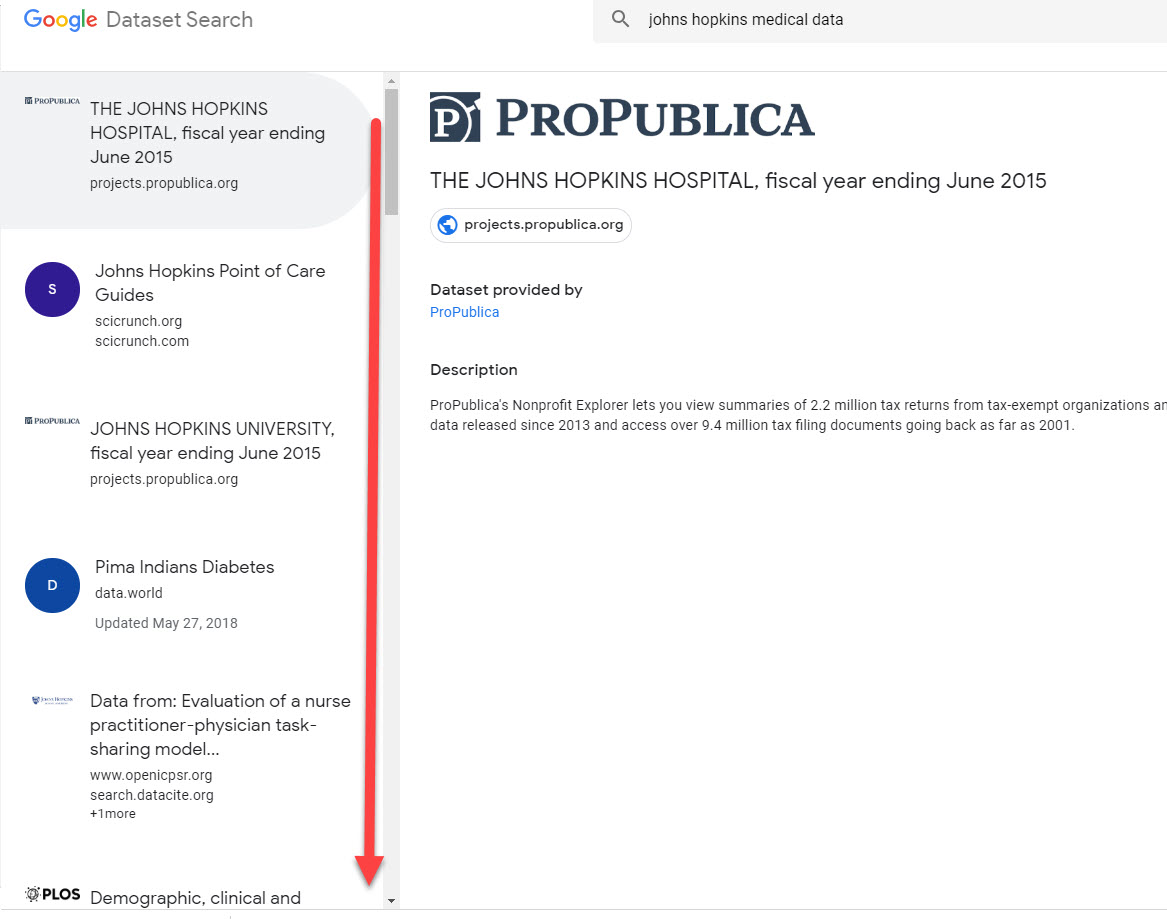
Google’s new dataset search engine showing results for the keyword ‘johns
Updates Made to the Quality Rater Search Guidelines
As mentioned briefly earlier, 2018 saw a significant update to Google’s Quality Rater Guidelines. With the changes, Google now asks its raters to consider the authority of a page’s author, if a page is “of beneficial purpose” to what the site aims to do, etc. Also, the new guidelines ask its raters to ensure that a page associated with a YMYL site is “safe” for users, i.e., that the page will do no harm.
With elements like a renewed focus on YMYL and the like, the new guidelines, as indicated above, came into focus upon Google releasing the Medic Update.
What’s In Store for SEO in 2019?

Great question. While it’s not possible to make any ironclad predictions, the winds are blowing in a certain “search direction.” That direction, in my estimation, means you’ll be hearing a lot less about mobile. It’s not just the mobile-first index being well on its way to its ultimate objective. I think Google has moved past mobile as it sees more value in other facets of the search universe.
What facets you might ask?
Guided and multiple intent meeting search journeys on the one hand and voice search on the other. Actually, the two are part in parcel of the same goal. In my estimation, whether consciously or not, Google has redefined its identity. That is, the culmination of year and years of change and progress have resulted in Google seeing itself as being they who hold the user’s hand and guide them towards the final end of their search process. Doing as such, assuming things go according to plan, offers the possibility of engendering a level of user satisfaction that would leave Google “untouchable.”
Which is a great thing for a company who sees an untapped revenue market in voice
In a nutshell, I see 2019 being all about AI, machine learning, an unprecedented attempt to satisfy multiple user intents, and the further development of voice search.
Do you agree?

